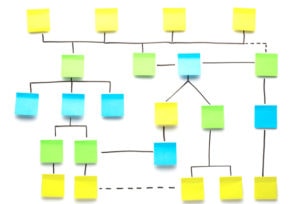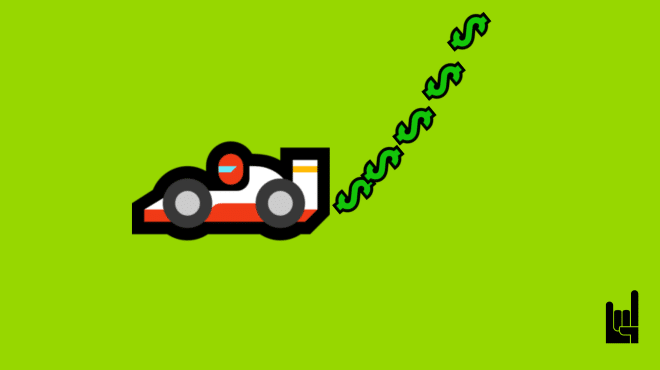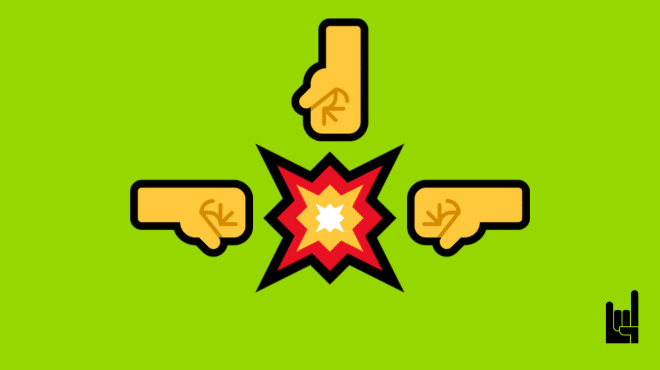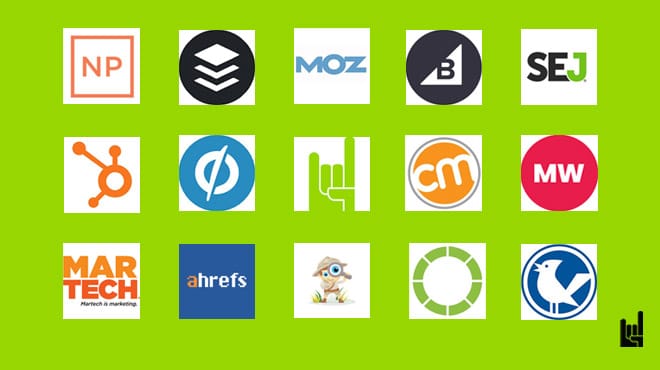Upon getting off my bike, I saw a young guy pumping gas in his bike – same color, same model.
Being the owners of the exact same motorcycle, which btw is not very popular, we chit-chatted a bit. And so we talked about what we like about our mechanical companions and what we don’t.
What struck me was that, overall, we had different things to say.
We were two different people, at different ages, coming from different walks of life, using the same bike for entirely different reasons.
We were two different buyer personas.
What is a buyer persona?
A buyer persona is a fictional character representation of your ideal prospect. It’s the representation of your perfect customer. This fictional person may not even exist in real life but could potentially exist.
Representing your ideal prospect means that it combines the most desirable characteristics you want to see in a customer.
The persona is based on market research and real data about your existing customers. Your customer avatar has specific demographic and behavioral characteristics as well as specific emotional needs and reactions.
This marketing persona can reveal insights about your buyers’ feelings, pains, concerns, and desires. Apart from giving an answer to who your customer is, a persona lets you know what they want – and what they don’t.
How is a buyer persona different from a target audience?
So why create a buyer persona?
Before buyer personas rose to prominence, target audiences were the primary tool marketers used to understand their audience.
Defining your target audience means providing an overview, a big-picture look at who you’re targeting.
What would that look like?
Let’s say that you are a growth hacking agency and decide to target Personal Success Coaches.
This is what you’d typically write if you wanted to create a profile of a specific target audience:
Life coaches, aged 30-50 who live in Chicago
Pretty straightforward, nothing new here.
If you wanted to create the profile of your buyer persona, it would look more like this:
‘Notime’ George. Notime George is 45 years old, married, with 2 children. He lives in Chicago and he is the owner of a successful coaching business that helps people overcome their psychological barriers to success.
He achieves this through regular seminars that are being held monthly by him and his 2 partners. They have been pretty successful so far, generating $70,000 in monthly revenue. However he is struggling to take things to a new level as a) he is overworked, b) he micromanages a lot, and c) costs are going up.
He needs a way to put his marketing on autopilot so that he can free his time, spend more time with his family and create new profitable seminars. Hence his name ‘Notime’. He likes taking risks, he is appreciative of others’ time, and efforts and he values honesty, integrity, and professionalism.”
As you can see, a target audience describes demographics. A buyer persona also describes behaviors.

Oftentimes, framing your target audience can be the first step to building your marketing persona. What starts as a description of your target audience demographics can end up as the profile of your customer avatar.
What’s more, you can bring your customer avatar to life visually by learning how to create an AI avatar.
Through the creation of a customer avatar, you can craft a marketing message with higher chances of appealing to George – your George. A message that will address his problems, his needs, and his desires. One that will speak directly to his heart. Or one that will be irresistible for him not to react to.
What are the benefits of a buyer persona?
Imagine that you are the coach, and you want to reach out to your potential clients.
Here is what you could say: “Everybody could be interested in my seminars/coaching sessions, so I want my offer to be seen by as many people as possible.”
Isn’t reaching as many people as I can my objective here?
Brand awareness is great. But brand awareness is not everything.
The mere exposure -in numeric terms- of your products, is a bad metric to define the success of a marketing campaign. You want paying customers. And most coaches would falsely assume that Big exposure = More customers.
In reality, Good exposure = More customers.
If you try to speak to everyone, you end up speaking to no one.
You might also say: “My services do not appeal only to that particular avatar! If my message speaks only to this person, I might lose a lot of customers.
That’s a very good point and not far from the truth. But it is – surprisingly – not a problem at all.
You can think about it this way –
Buyer persona strategy example
A. Imagine you have a market of 1.000.000 people. You decide that your service is “for everyone” and make a marketing campaign to advertise your awesome coaching seminar using a weak generic message to that audience.
Chances are that unless you have a huge budget, you won’t even reach all of them. Say that you reach 100.000 of them. What you will end up with is a sample of 100.000 people, which is not homogeneous in terms of their characteristics.
Let’s say you convert 1% of them (1.000 people) into customers.
B. Now imagine you decide to work with a specific buyer persona. Out of the 1.000.000 people, only 50.000 of them meet the requirements of the persona. That means that you will only need half the budget to reach that amount of people.
However, now you have crafted a message precisely for them. What do you think the conversion rate will be now? Let’s be conservative here and say that it’s double the amount – 2%.
So, you still convert 1.000 people to customers, with half(!) the budget. But there is more! You can keep the budget you’re left with and use it for a second avatar. That will result in another 1.000 paying customers.
In the second case, you send your message to fewer people, but given it’s more personal and thus speaks to them, you are going to persuade.
By creating a marketing persona, you narrow down your target market, which allows you to target them more effectively.

Many of their traits and behaviors become apparent. You will know about your avatar’s pains, wishes, and fears. Knowledge is power, and in our case, power could mean the solution to our customer’s problem(s).
A buyer persona gives you the ability to tailor your marketing efforts and connect with your target audience in the most personal and direct way.
In other words, having a specific customer in mind helps you plan all your strategies (sales, marketing, brand awareness, new products, priorities, etc.) and be more effective and efficient.
You begin to view your prospects as real people, not faceless demographics.
Keep always in mind that every business, no matter the sector they are into, will grow and expand only when the value that gives to its customers is of great importance. This way, keeping your ideal avatar in mind will help you achieve better results for your clients and thus higher revenues for your business.
So exactly how many marketing personas do you need?
That is a good question (yay me), and the answer is clearly “it depends”. It depends on the type of business you are in, your budget, and your resources. Don’t think quantitatively. Think qualitatively. As a rule of thumb, though, start with one buyer persona.
If you want to know more about this, you can read How many buyer personas you should have.
How do you create a buyer persona template?
Now that you know more about buyer personas, it’s time to make your own! To help you with that, I’ve included a buyer persona template at the end of this blog post.
The purpose of any buyer persona template is to help you have a crystal clear idea regarding who you are talking to and to whom you are trying to sell your product or service. The idea is to have all the necessary information gathered in one place when it comes to your ideal customer.
While you are filling out the buyer persona template, try to answer as if you were your ideal customer and not as yourself. The objective of this template is to have a clear picture of how your ideal customer thinks/feels etc.
Name:
Gender:
Age:
Marital Status / Children:0000000000
Location:
Job Title:
Annual Income:
Level of Education:
Goal
My ultimate goal is [goal] because it will allow me to [life after goal].
Struggles
Pain Points
However, I’m currently [current status], and it’s keeping me from being able to [desired status].
The reason that is limiting my growth is [reason].
Obstacles
In order to reach my goal, I have tried to [failed attempt/obstacle #1] with little success, and this has resulted in [result].
Failed Solutions
I’ve tried [older solution] in the past, but it failed because it [reason(s) it failed].
How the product/service helps me:
Since I found [product/ service] I am now able to [kind of accomplishment].
Click on the image below to grab your own Buyer Persona Template!

Theodore has 20 years of experience running successful and profitable software products. In his free time, he coaches and consults startups. His career includes managerial posts for companies in the UK and abroad, and he has significant skills in intrapreneurship and entrepreneurship.




